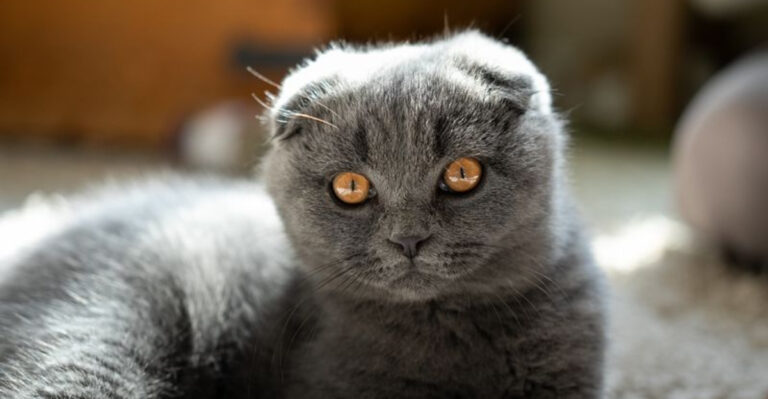8 Tropical Fish That Don’t Belong In Your Home Aquarium (And 5 That Are Exotic But Beginner-Friendly)
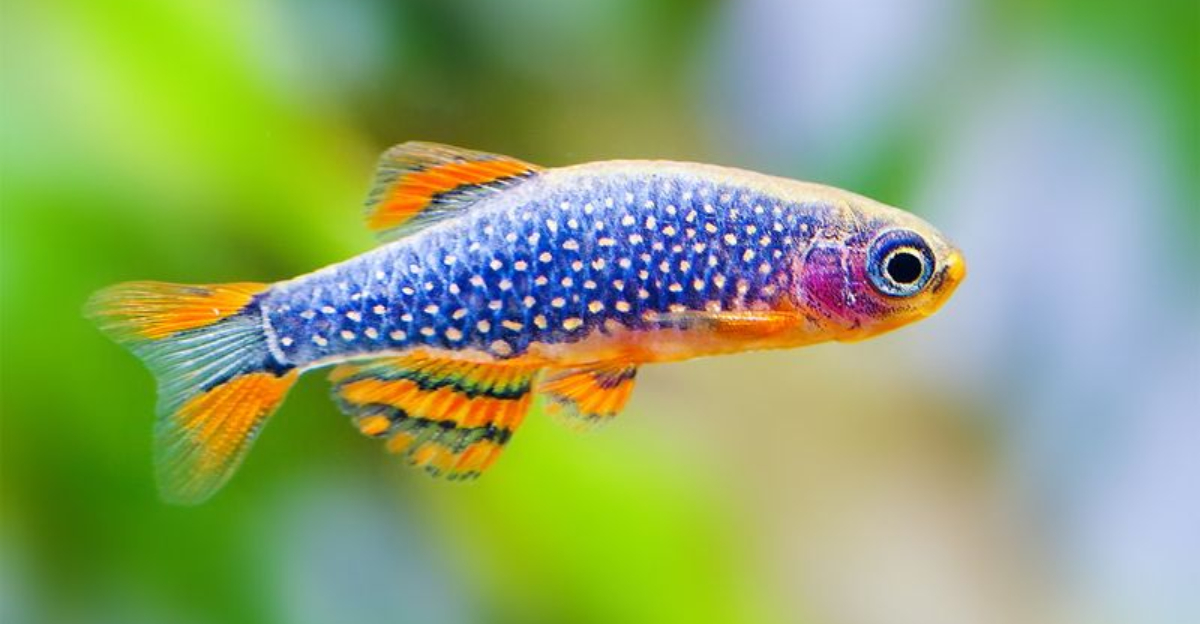
Setting up a home aquarium can be an exciting hobby, but not all tropical fish make suitable pets. Some require specialized care, massive tanks, or simply grow too large for the average home setup.
Others might be aggressive, territorial, or have specific water chemistry needs that are difficult to maintain. Before you stock your tank, it’s worth knowing which fish to avoid and which exotic-looking species can actually thrive under a beginner’s care.
1. The Pacu: Vegetarian Piranha Lookalike

Often sold as cute 2-inch juveniles, Pacu fish grow to a shocking 3 feet long! These Amazon natives require tank sizes exceeding 500 gallons when fully grown.
Pet stores rarely mention this growth potential, leading to countless abandoned Pacus. Their powerful jaws, designed for crushing nuts and seeds in the wild, need specialized care most hobbyists can’t provide.
2. Freshwater Stingrays: Specialized Floor Dwellers

Majestic as they may appear, freshwater stingrays demand expert-level care. Their graceful movements hide their challenging requirements: custom-built wide tanks with smooth bottoms and pristine water quality.
Most species grow to dinner-plate size or larger. They’re extremely sensitive to water parameters, making them unsuitable for beginners. Their venomous barbs pose a real safety risk during tank maintenance.
3. Red-Tailed Catfish: River Monster In Disguise
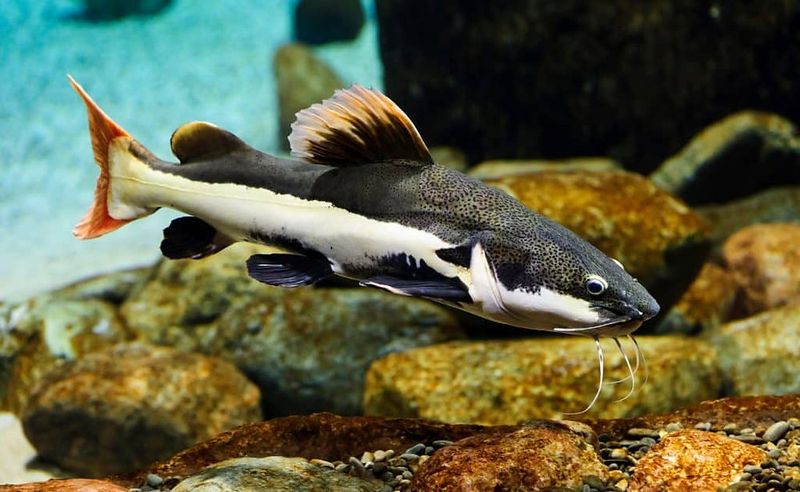
Baby Red-tailed Catfish charm shoppers with their striking patterns and active behavior. Don’t be fooled! These South American giants reach 4 feet long and 100+ pounds in nature.
Even in captivity, they easily grow 2-3 feet, requiring tank sizes comparable to small swimming pools. Their predatory nature means they’ll eventually try to eat tank mates, including surprisingly large ones. Public aquariums frequently receive surrendered specimens.
4. Arapaima: Prehistoric River Giants
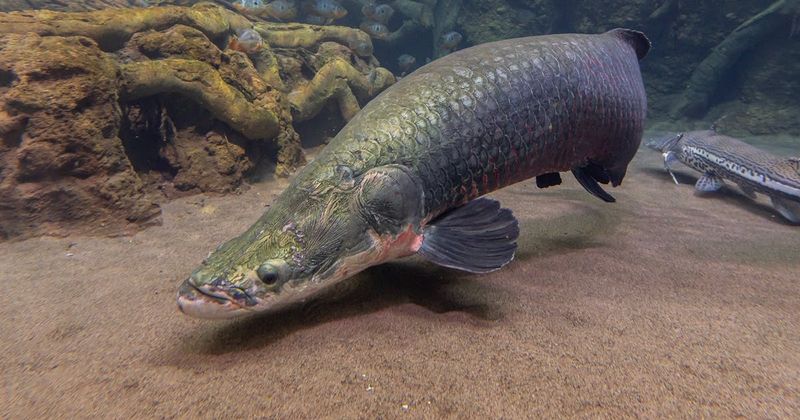
Featured on TV shows like “River Monsters,” Arapaima are among the world’s largest freshwater fish. These prehistoric-looking creatures exceed 10 feet in length and 400 pounds!
Incredibly, they’re sometimes sold to unsuspecting hobbyists. No home aquarium can accommodate their needs. They require massive custom systems costing tens of thousands of dollars, plus specialized care and feeding protocols beyond casual hobbyists.
5. Iridescent Shark: The Tank-Buster Catfish
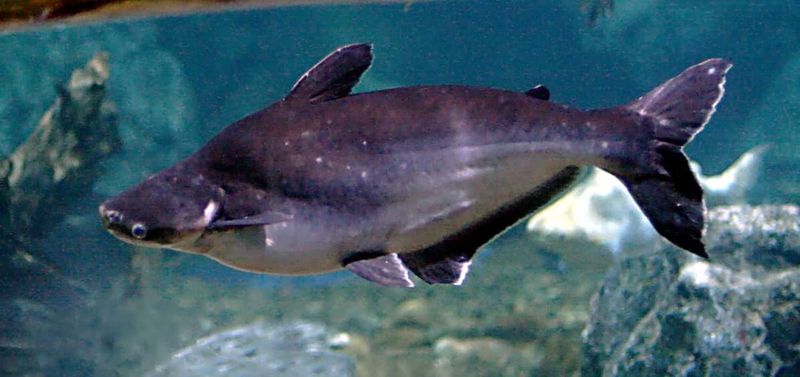
Despite their name, these aren’t sharks but catfish native to Southeast Asian rivers. Pet stores sell them as 2-3 inch juveniles with silvery bodies and active swimming habits.
Fast forward a year – they’ll reach 12-18 inches and continue growing to 3-4 feet! They’re nervous swimmers requiring huge open spaces. Their anxious nature leads to constant darting, often resulting in injuries in all but the largest home tanks.
6. Oscar Fish: Intelligent But Demanding
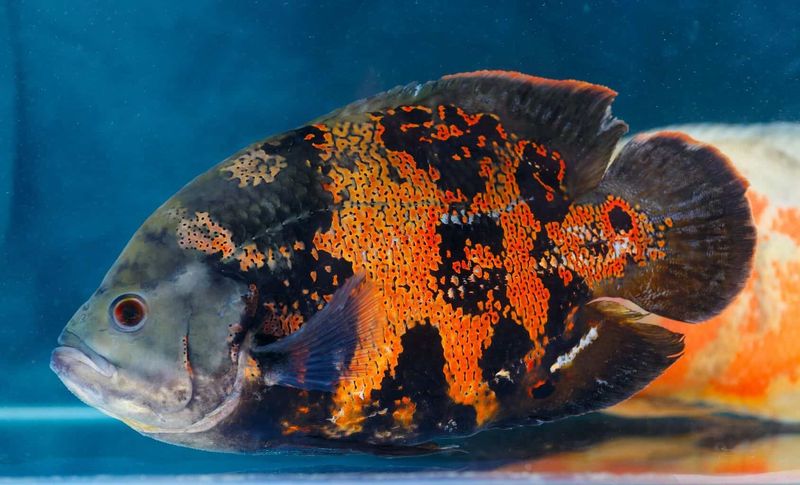
Oscars captivate aquarists with their dog-like personality and intelligence. They recognize owners, beg for food, and even allow gentle petting! But their personable nature comes with hefty requirements.
Growing up to 12 inches, a single Oscar needs at least 75 gallons. They’re messy eaters generating significant waste. Their territorial behavior means most tank mates end up bullied or eaten. Expect a 10-15 year commitment with proper care.
7. Clown Knife Fish: Nighttime Predator

With a distinctive black spot near their tail resembling an eye, Clown Knife Fish create a stunning display. Their unique swimming style using an undulating fin makes them fascinating to watch.
However, these nocturnal predators grow to 3 feet long, requiring 300+ gallon tanks. They’re skilled jumpers needing secure lids, and their carnivorous diet means smaller fish become expensive live food. Their specialized care makes them poor choices for most home setups.
8. Arowana: The Dragon Fish Dilemma
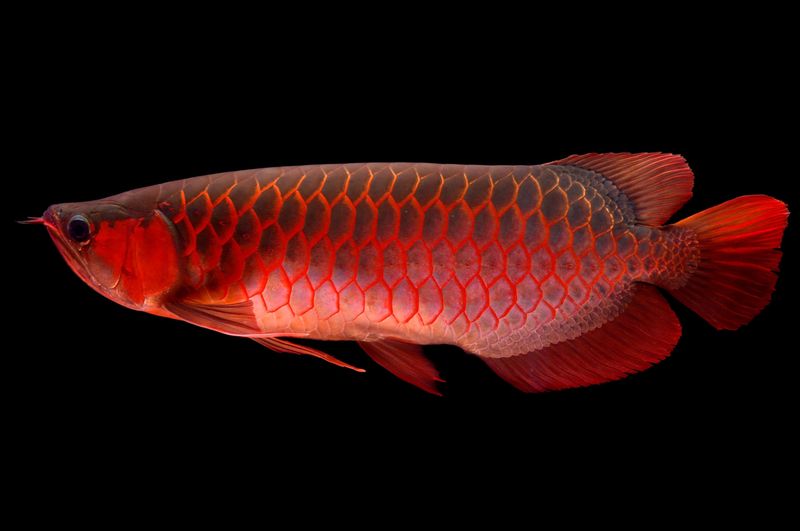
Revered in Asian cultures as bringers of good fortune, Arowanas command high prices and devoted followings. Their prehistoric appearance and graceful swimming make them aquarium royalty.
Reality check: they grow 2-3 feet long, jump with remarkable power, and require 250+ gallon tanks. Some species are endangered, requiring special permits. Their territorial nature and specialized feeding needs make them suitable only for the most dedicated specialists.
9. Dwarf Gourami: Colorful Beginner Beauty
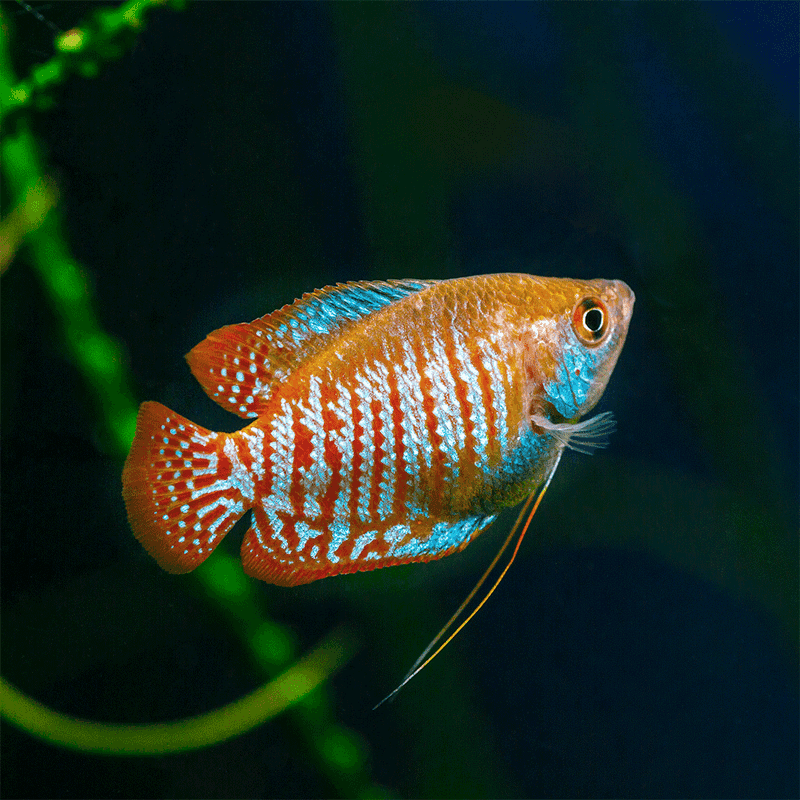
Looking for exotic without the headache? Dwarf Gouramis deliver with their vibrant blues, reds, and oranges in a manageable 2-inch package. These labyrinth fish can breathe air directly from the surface – a fascinating adaptation!
Perfect for 10-20 gallon community tanks, they’re peaceful with most similarly-sized fish. Their only special requirement is a planted tank with hiding spots. Males build bubble nests for breeding, adding an interesting behavioral display.
10. Kuhli Loach: The Living Noodle
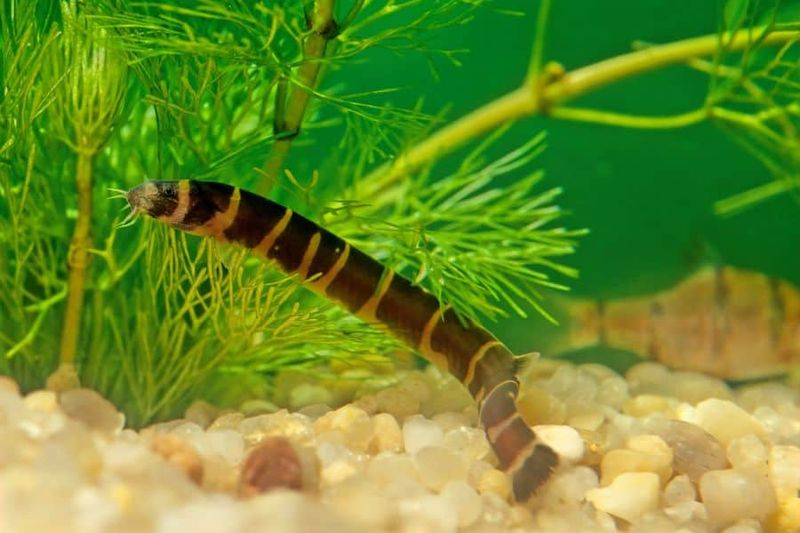
These quirky bottom-dwellers resemble tiny eels or animated noodles! Growing only 3-4 inches long, Kuhli Loaches bring unique personality to community tanks with their amusing behaviors and distinctive striped pattern.
They thrive in groups of 6+ in tanks 20 gallons or larger. Their peaceful nature makes them compatible with most community fish. They appreciate soft substrate to burrow in and small hiding places, but require no specialized care beyond basic tropical fish needs.
11. Bolivian Ram: Manageable Cichlid Beauty
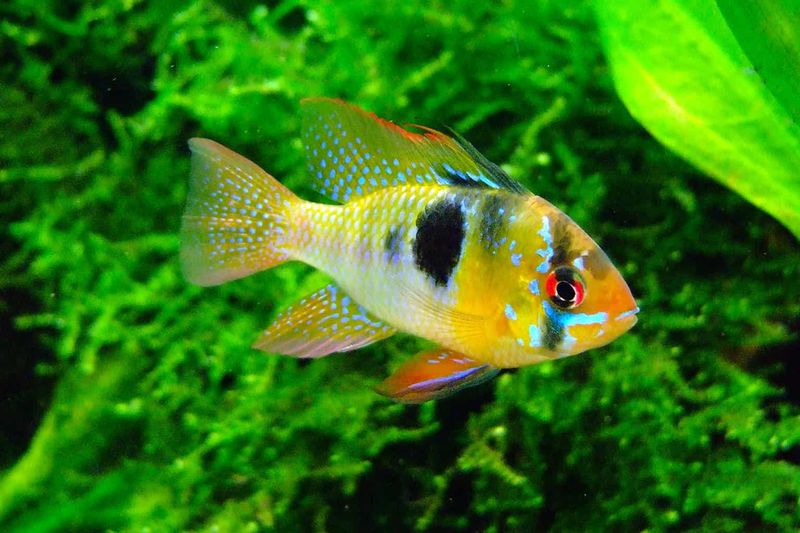
Unlike their larger, aggressive cichlid cousins, Bolivian Rams stay small (3 inches) and maintain peaceful temperaments. Their subtle golden-orange colors and expressive faces offer cichlid personality without the typical aggression.
They thrive in 20+ gallon tanks with moderate plants and driftwood. Bolivian Rams form monogamous pairs and display fascinating parental care behaviors. Their hardy nature forgives minor water parameter fluctuations, making them perfect for enthusiastic beginners ready to witness cichlid intelligence.
12. Celestial Pearl Danio: Living Jewels
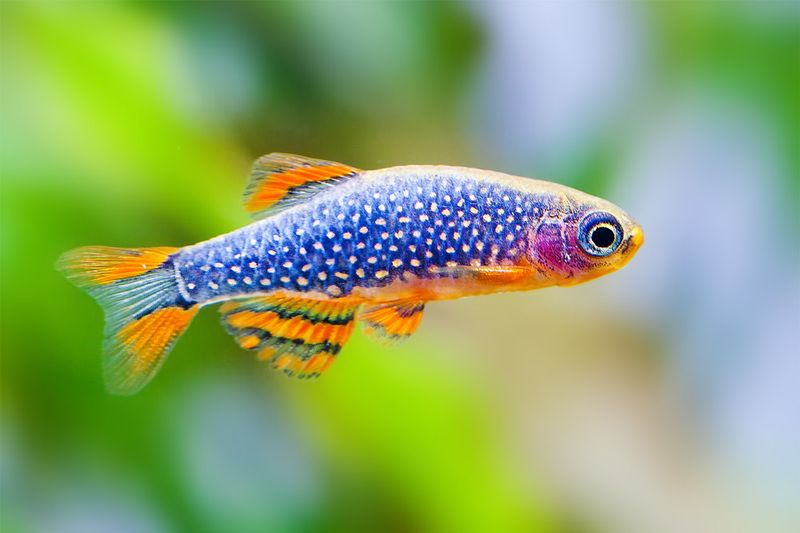
Discovered only in 2006, these micro-fish pack extraordinary beauty into their tiny 1-inch frames! Their deep blue bodies covered in pearl-like spots resemble a night sky, earning them their celestial name.
Despite their exotic appearance, they’re surprisingly hardy in established tanks of 10+ gallons. They prefer cooler water (68-75°F) than most tropical fish. Their peaceful schooling behavior makes them perfect companions for other small, peaceful species in planted nano aquariums.
13. Peacock Gudgeon: Miniature Masterpiece

Imagine the colors of a peacock compressed into a 2-inch fish! Peacock Gudgeons showcase electric blues, vibrant oranges, and striking patterns that rival marine fish for beauty, yet they’re freshwater dwellers from Papua New Guinea.
They thrive in established 15+ gallon tanks with plenty of plants and hiding spots. Their calm demeanor makes them compatible with other peaceful species. Males display fascinating courtship behaviors, and pairs will even raise their young in small caves – a rare treat for hobbyists!




